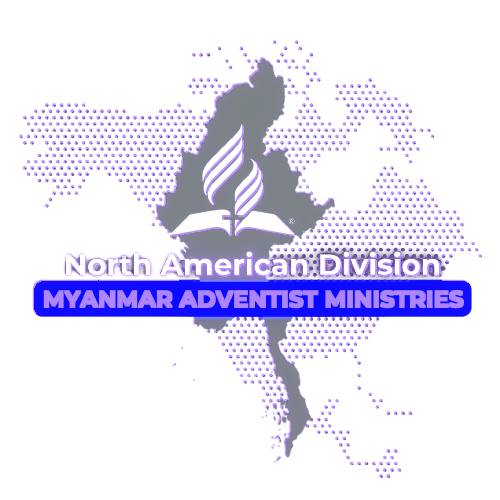The Seventh-day Adventist® Church is organized with a representative form of church government. This means authority in the Church comes from the membership of local churches. Executive responsibility is given to representative bodies and officers to govern the Church. Four levels of Church structure lead from the individual believer to the worldwide Church organization:
The local church is made up of individual believers [UPDATE: Here is a growing list of local churches in the NAD that are live-streaming during COVID-19 shutdown.]
The local conference, or local field/mission, is made up of a number of local churches in a state, province, or territory
The union conference, or union field/mission, is made up of conferences or fields within a larger territory (often a grouping of states or a whole country)
The General Conference, the most extensive unit of organization, is made up of all unions/entities in all parts of the world. Divisions are sections of the General Conference, with administrative responsibility for particular geographical areas.
Each level is "representative." That is, it reflects a democratic process of formation and election. Local churches elect their own officers and church boards by majority voting. Churches elect delegates to the conferences which meet "in session" every two or three years. Executive authority between sessions is exercised by the Conference Executive Committee and the executive officers (normally President, Secretary and Treasurer), all of whom are elected by the session.
A similar process operates for Union sessions usually every five years, and General Conference sessions, at which times officers and committees are elected, reports given and policies decided.
Within these four levels the Church operates various institutions. In their world outreach, Adventists serve the whole person and have developed educational, health-care, publishing, media (radio, print, television, web, satellite), and other institutions. The multiple units of the world Church, whether congregations, conferences, health-care institutions, publishing houses, schools, or other organizations, all find their organizational unity in the General Conference of Seventh-day Adventists in which they have representation.
The General Conference is the highest earthly authority for the Church. The General Conference in session, and the Executive Committee between sessions, is the highest organization in the administration of the Church's worldwide work, and is authorized by its constitution to create subordinate organizations to promote specific interests in various sections of the world. When differences arise in or between organizations and institutions, appeal to the next higher organization is proper until it reaches the General Conference in session, or the Executive Committee at the Annual Council. During the interim between these sessions, the Executive Committee shall constitute the body of final authority on all questions where a difference of viewpoint may develop.
Seventh-day Adventist® Church ကို အသင်းတော်အစိုးရ၏ ကိုယ်စားလှယ်ပုံစံဖြင့် ဖွဲ့စည်းထားပါသည်။ ဆိုလိုသည်မှာ အသင်းတော်ရှိ အခွင့်အာဏာသည် ဒေသခံအသင်းတော်များ၏ အသင်းဝင်မှ ဆင်းသက်လာခြင်းဖြစ်သည်။ အသင်းတော်အား အုပ်ချုပ်ရန် ကိုယ်စားလှယ်အဖွဲ့များနှင့် အရာရှိများအား အမှုဆောင်တာဝန်ကို ပေးအပ်သည်။ ဘုရားကျောင်းဖွဲ့စည်းပုံ အဆင့်လေးဆင့်သည် ယုံကြည်သူ တစ်ဦးစီမှ ကမ္ဘာတစ်ဝှမ်းရှိ ချာ့ခ်ျအဖွဲ့အစည်းသို့ ဦးတည်သည်-
ဒေသန္တရအသင်းတော်အား ယုံကြည်သူ တစ်ဦးချင်းစီဖြင့် ဖွဲ့စည်းထားခြင်းဖြစ်သည် [UPDATE- ဤသည်မှာ COVID-19 ပိတ်ချိန်အတွင်း တိုက်ရိုက်ထုတ်လွှင့်နေသည့် NAD ရှိ ဒေသခံအသင်းတော်များ၏ တိုးပွားလာသောစာရင်းတစ်ခုဖြစ်သည်။]
ဒေသဆိုင်ရာ ကွန်ဖရင့် သို့မဟုတ် ဒေသဆိုင်ရာ နယ်ပယ်/မစ်ရှင်ကို ပြည်နယ်၊ ပြည်နယ် သို့မဟုတ် နယ်မြေတစ်ခုရှိ ဒေသဆိုင်ရာ အသင်းတော်များစွာဖြင့် ဖွဲ့စည်းထားသည်။
ပြည်ထောင်စု ကွန်ဖရင့် (သို့) ပြည်ထောင်စု နယ်ပယ်/ မစ်ရှင် သည် ပိုကြီးသော နယ်မြေ အတွင်း ညီလာခံများ သို့မဟုတ် နယ်ပယ်များ ဖြင့် ဖွဲ့စည်းထားသည် ( အများအားဖြင့် ပြည်နယ်များ သို့မဟုတ် တစ်ပြည်လုံး အတိုင်းအတာ )
အထွေထွေညီလာခံ၊ အဖွဲ့အစည်း၏ အကျယ်ပြန့်ဆုံး ယူနစ်သည် ကမ္ဘာတစ်ဝှမ်းလုံးရှိ သမဂ္ဂ/အဖွဲ့အစည်းအားလုံးဖြင့် ဖွဲ့စည်းထားသည်။ အပိုင်းများသည် အထွေထွေညီလာခံ၏ ကဏ္ဍများဖြစ်ပြီး၊ အထူးသဖြင့် ပထဝီဝင်နယ်မြေများအတွက် စီမံခန့်ခွဲရေးတာဝန်ရှိသည်။
အဆင့်တိုင်းသည် "ကိုယ်စားလှယ်" ဖြစ်သည်။ ဆိုလိုသည်မှာ ယင်းသည် ဖွဲ့စည်းခြင်းနှင့် ရွေးကောက်ပွဲ၏ ဒီမိုကရေစီ လုပ်ငန်းစဉ်ကို ထင်ဟပ်စေသည်။ ဒေသခံအသင်းတော်များသည် အများစုမဲဆန္ဒဖြင့် ၎င်းတို့၏ အရာရှိများနှင့် ဘုရားကျောင်းဘုတ်အဖွဲ့များကို ရွေးချယ်ကြသည်။ ချာ့ခ်ျများသည် နှစ်နှစ် သို့မဟုတ် သုံးနှစ်တစ်ကြိမ် “အစည်းအဝေး” တွင် တွေ့ဆုံသည့် ညီလာခံများသို့ ကိုယ်စားလှယ်များကို ရွေးချယ်သည်။ အစည်းအဝေးများအကြား အမှုဆောင် အာဏာပိုင်ကို ညီလာခံ အမှုဆောင် ကော်မတီနှင့် အမှုဆောင် အရာရှိများ (ပုံမှန်အားဖြင့် သမ္မတ၊ အတွင်းရေးမှူး နှင့် ဘဏ္ဍာရေးမှူး) တို့က ကျင့်သုံးပြီး ၎င်းတို့အားလုံးကို အစည်းအဝေးက ရွေးချယ်တင်မြှောက်သည်။
အလားတူ လုပ်ငန်းစဉ်သည် အများအားဖြင့် ငါးနှစ်တစ်ကြိမ် ပြည်ထောင်စု အစည်းအဝေးများ အတွက် လုပ်ဆောင်နေပြီး အရာရှိများနှင့် ကော်မတီများကို ရွေးချယ်တင်မြှောက်သည့် အချိန်များတွင် ပေးအပ်သည့် အစီရင်ခံစာများနှင့် မူဝါဒများကို ဆုံးဖြတ်သည့် အထွေထွေ ညီလာခံ အစည်းအဝေးများ ဖြစ်သည်။
ဤအဆင့်လေးဆင့်အတွင်း အသင်းတော်သည် အဖွဲ့အစည်းအမျိုးမျိုးကို လုပ်ဆောင်သည်။ ၎င်းတို့၏ကမ္ဘာ့ဖြန့်ကျက်မှုတွင်၊ Adventists များသည်လူတစ်ကိုယ်လုံးကိုအစေခံပြီးပညာရေး၊ ကျန်းမာရေးစောင့်ရှောက်မှု၊ ထုတ်ဝေခြင်း၊ မီဒီယာ (ရေဒီယို၊ ပုံနှိပ်၊ ရုပ်မြင်သံကြား၊ ဝဘ်၊ ဂြိုလ်တု) နှင့်အခြားအဖွဲ့အစည်းများကိုတီထွင်ခဲ့သည်။ အသင်းတော်များ၊ ညီလာခံများ၊ ကျန်းမာရေးစောင့်ရှောက်မှုအဖွဲ့အစည်းများ၊ ထုတ်ဝေရေးအိမ်များ၊ ကျောင်းများ သို့မဟုတ် အခြားအသင်းတော်များဖြစ်စေ ကမ္ဘာတစ်ဝှမ်းရှိ အသင်းတော်အများအပြားသည် ၎င်းတို့ကိုယ်စားပြုထားသော သတ္တမနေ့ ဥပုသ်နေ့များ၏ အထွေထွေညီလာခံတွင် ၎င်းတို့၏ အဖွဲ့အစည်းဆိုင်ရာ စည်းလုံးမှုကို တွေ့ရပါသည်။
အထွေထွေညီလာခံသည် အသင်းတော်အတွက် မြေကြီးဆိုင်ရာ အမြင့်ဆုံးအာဏာပိုင်အဖွဲ့ဖြစ်သည်။ အစည်းအဝေးရှိ အထွေထွေညီလာခံနှင့် အစည်းအဝေးများကြားတွင် အမှုဆောင်ကော်မတီသည် အသင်းတော်၏ ကမ္ဘာတစ်ဝှမ်းရှိ လုပ်ငန်းဆောင်တာများကို စီမံခန့်ခွဲရာတွင် အမြင့်ဆုံးအဖွဲ့အစည်းဖြစ်ပြီး ကမ္ဘာ့ကဏ္ဍအသီးသီးတွင် သီးခြားအကျိုးစီးပွားများမြှင့်တင်ရန်အတွက် လက်အောက်ခံအဖွဲ့အစည်းများကို ဖန်တီးရန် ၎င်း၏ဖွဲ့စည်းပုံအခြေခံဥပဒေအရ ခွင့်ပြုထားသည်။ အဖွဲ့အစည်းများနှင့် အဖွဲ့အစည်းများကြားတွင် သို့မဟုတ် ကွဲလွဲမှုများ ပေါ်ပေါက်လာပါက အထွေထွေညီလာခံ သို့မဟုတ် နှစ်စဉ်ကောင်စီရှိ အမှုဆောင်ကော်မတီသို့ မရောက်ရှိမချင်း လာမည့် အဆင့်မြင့်အဖွဲ့အစည်းထံ မေတ္တာရပ်ခံခြင်းသည် သင့်လျော်ပါသည်။ ဤအစည်းအဝေးများကြားတွင် ကြားဖြတ်ကာလအတွင်း၊ အမှုဆောင်ကော်မတီသည် သဘောထားကွဲလွဲမှုများရှိလာနိုင်သည့် မေးခွန်းအားလုံးအတွက် နောက်ဆုံးအာဏာပိုင်အဖွဲ့ကို ဖွဲ့စည်းရမည်။
VIDEOS: Adventist Church 101
Administratively, the world-wide Church has 13 Divisions, which are composed of churches grouped by a collection of missions, fields, or states into unions of churches. The North American Division is one of the 13 Divisions. The Divisions, and headquarters are:
East-Central Africa (ECD) Nairobi, Kenya
Euro-Asia (ESD) Moscow, Russia
Inter-American (IAD) Miami, Florida, United States of America
Inter-European (EUD) Berne, Switzerland
North American (NAD) Columbia, Maryland, United States of America
Northern Asia-Pacific (NSD) Koyang City, Korea
South American (SAD) Brasilia, Brazil
South Pacific (SPD) Wahroonga, Australia
Southern Africa-Indian Ocean (SID) Harare, Zimbabwe
Southern Asia (SUD) Tamil Nadu, India
Southern Asia-Pacific (SSD) Cavite, Philippines
Trans-European (TED) St. Albans, England
West-Central Africa (WAD) Abidjan, Cote d'Ivoire
NAD Unions and Conference Headquarters
* This information was obtained from the General Conference of Seventh-day Adventists web site.
NORTH AMERICAN DIVISION
MYANMAR ADVENTIST MINISTRIES

